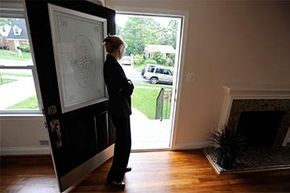Back in the pioneer days, settlers drove claim stakes into the ground, parked their oxen and set up camp. Then they started building their houses from log in nearby trees. Now, the homebuying process is fraught with contracts, terminology and the threat of looming mortgages that are often enough to scare potential buyers into remaining renters.
In 2008, former President George W. Bush and the U.S. government introduced the first-time homebuyer credit to encourage people to get off their keisters already and take the first-home plunge, as part of the Housing and Economic Recovery Act of 2008. The credit was launched to revitalize the languishing American housing market, which began an epic free fall in 2006 [sources: Baker, The Economist]. In addition, the entire housing business community felt more than a little pinch, with builders and suppliers losing megabucks with each passing month.
Advertisement
The original tax credit (think of it as version 1.0), was available to first-timers who closed on homes between April 8, 2008, and Jan. 1, 2009. It functioned like an interest-free loan, all of which had to be paid back over a 15-year period by way of the purchaser's federal income tax return. So, for people who received the maximum $7,500 credit, this averaged out to $500 per year, beginning with their 2010 tax returns [source: IRS]. For most people, the credit repayment uses IRS form 5405, "Repayment of the First-time Homebuyer Tax Credit," which is filled out and attached to Form 1040.
President Barack Obama expanded the credit as part of the American Recovery and Reinvestment Act of 2009, but changed it drastically from the original incarnation. First, it became a true credit, meaning that if homeowners followed all the rules they wouldn't have to pay it back ... ever! Score, right? The amount also increased to a potential $8,000 windfall, which enticed many buyers to sign on the dotted line [source: Bell].
This being the government, there were a lot of regulations to be met to take advantage of the credit. We'll examine them in detail on the next page.
Advertisement


